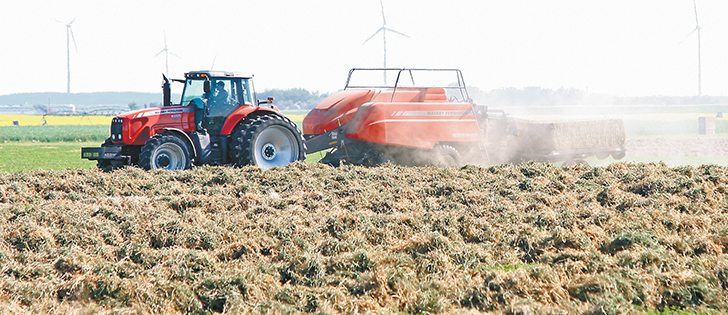The hay market in Saskatchewan went temporarily crazy in July last year.
Sellers of decent quality hay were asking $150 to $200 per ton, and buyers were willing to pay the extraordinary prices.
The price spike didn’t last into the fall, and it’s unlikely buyers will pay high prices this summer. Most hay produced this year is of low quality and there’s an adequate carryover of forage from last year.
“It (price) is not going to be at where it was last year because the quality is degrading so much (this summer),” said Jim Chaplin, a rancher and hay producer from Fort Qu’Appelle, Sask.
Read Also

Exports off to a slow start after last year’s torrid pace
Canadian grain, oilseed and pulse exports are off to a slow start, but there are some bright spots, according to the Canadian Grain Commission’s most recent weekly export data report.
“What are you going to do with all the hay that’s been rained on? This year nobody is getting their hay up dry. I’ve baled 600 rounds already and I’ve got 11 of those that I could put in for horse feed.”
A spring drought last year hampered hay production early in the summer and introduced an element of panic to the market. Sellers took advantage of the drought and high prices for cattle.
Some cashed in, receiving prices double the usual $75 to $100 a ton for hay.
“Guys last year, at the beginning of the year, were asking seven to eight cents a pound,” Chaplin said. “Five cents is good money on hay.”
Trevor Lennox, Saskatchewan Agriculture’s forage specialist in Swift Current, said the hay market is more sensible this summer.
“(The drought) drove that (price) spike. This year we haven’t seen that shortage.”
Hay prices posted online reflect the return to a normal market in Saskatchewan. Most hay for sale ads have prices of $60 to $70 per round bale, or around $90 to $100 per ton.
The warm and relatively short winter is also affecting the market because many ranchers still have stacks of bales in the yard.
“Most guys would tell you that their cows (used) less feed,” Lennox said.
Instead of prices, the story this summer is rain. Many producers have struggled to cut or bale hay because fields and swaths are wet.
“Some of it (cut hay) was rained on three, four or five times,” Chaplin said.
“I was picking bales yesterday and I was thinking, ‘if I get three cents a lb. for this stuff, I’d let it go.’ ”
Lennox said the wet and challenging conditions for making hay are widespread in Saskatchewan.
“The quality will be below average … and a fair bit below average in my region.”
Consequently, producers with high quality forage may receive a premium.
Lucas Closson, who farms west of Saskatoon, is one the few producers who put up high quality hay this summer.
He posted an ad online for 70 percent grass and 30 percent alfalfa hay at $100 per round bale, or about $130 per ton. The ad, posted late July, attracted more than 500 visits.
Closson said demand for hay might be stronger than many assume.
“There’s been so much rain, (few people) have even got started yet,” he said. “Last year I sold hay and I was getting pretty much the same (price) last year.”


















